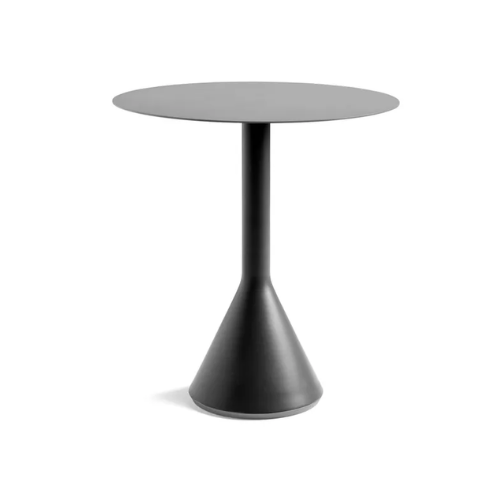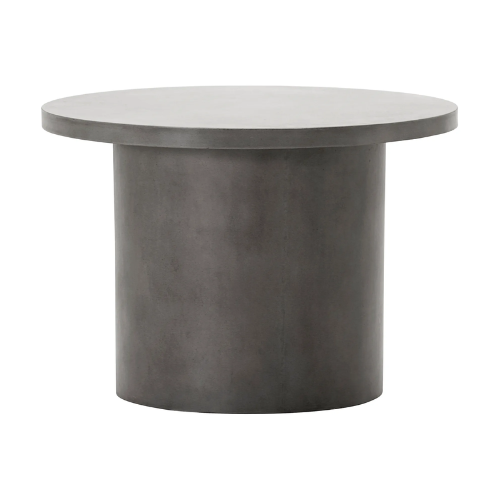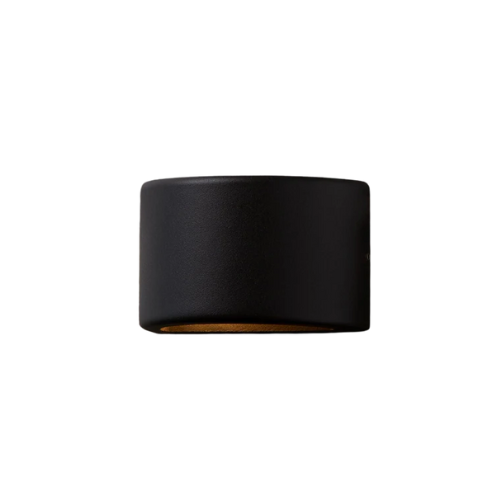A Landscaper Told Me They Always Paint Fences in Small Gardens This Unexpected Color — Here's Why
This simple switch has the power to take your back garden to the next level — no expensive landscaping or gardening required
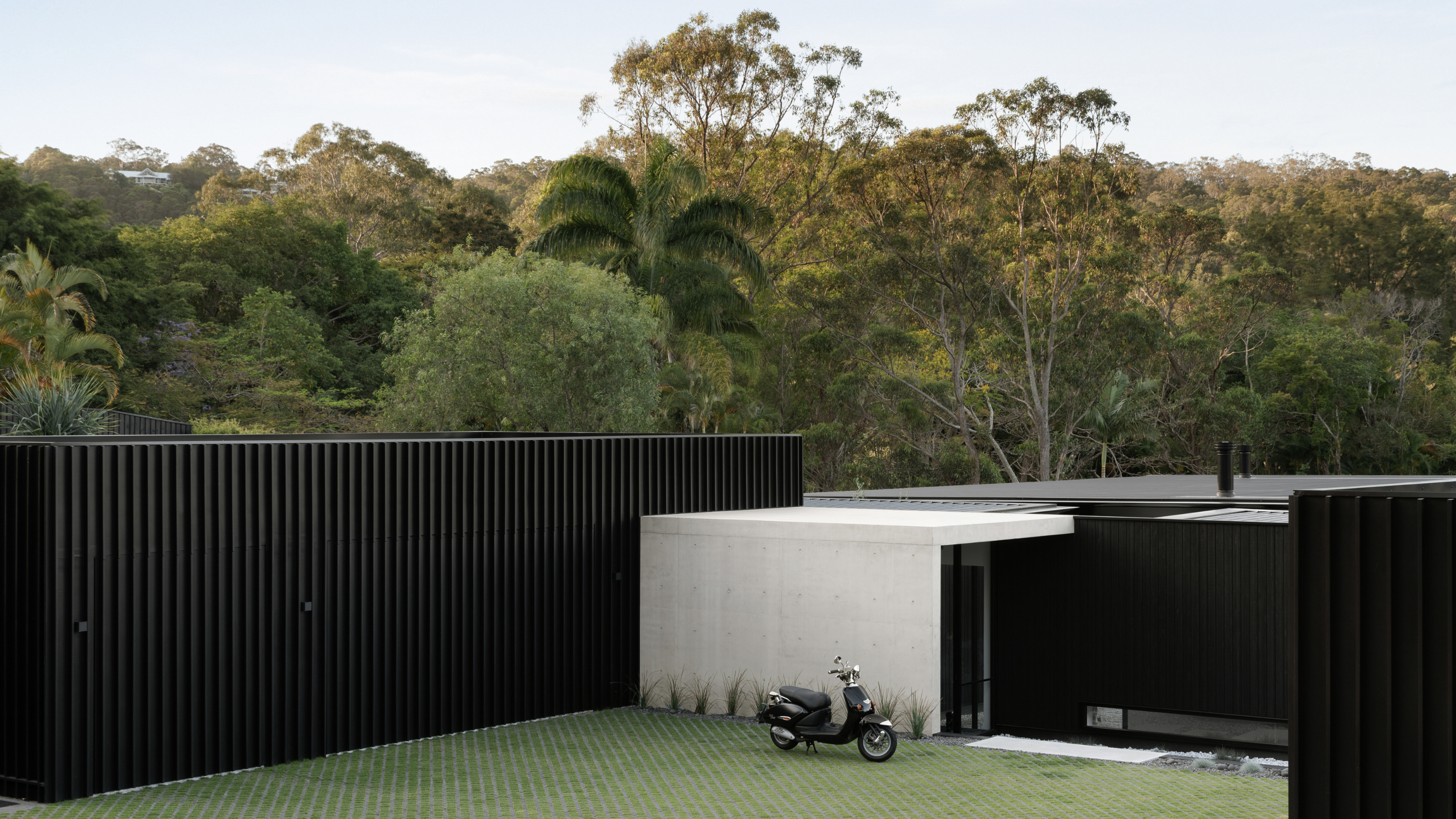

The color of your fence may not seem like the most riveting design choice you'll make, but it is one that can have a surprisingly dramatic effect on the look of your garden. And, according to the experts, there is one color that's a cut above the rest: black.
There's something very chic about a garden with a sleek, black, privacy fence running around the periphery. This design is especially effective when used as a smaller fence color, where the darker tone can create the illusion of more height.
Think of your shed as the frame for the painting that is your garden — while the emphasis will always be on the beautiful scene housed within it, for it to be appreciated at its fullest, it must be surrounded by something that makes it pop. And, according to the experts, nothing makes a garden pop quite like a black fence.
Why Experts Love this Trick
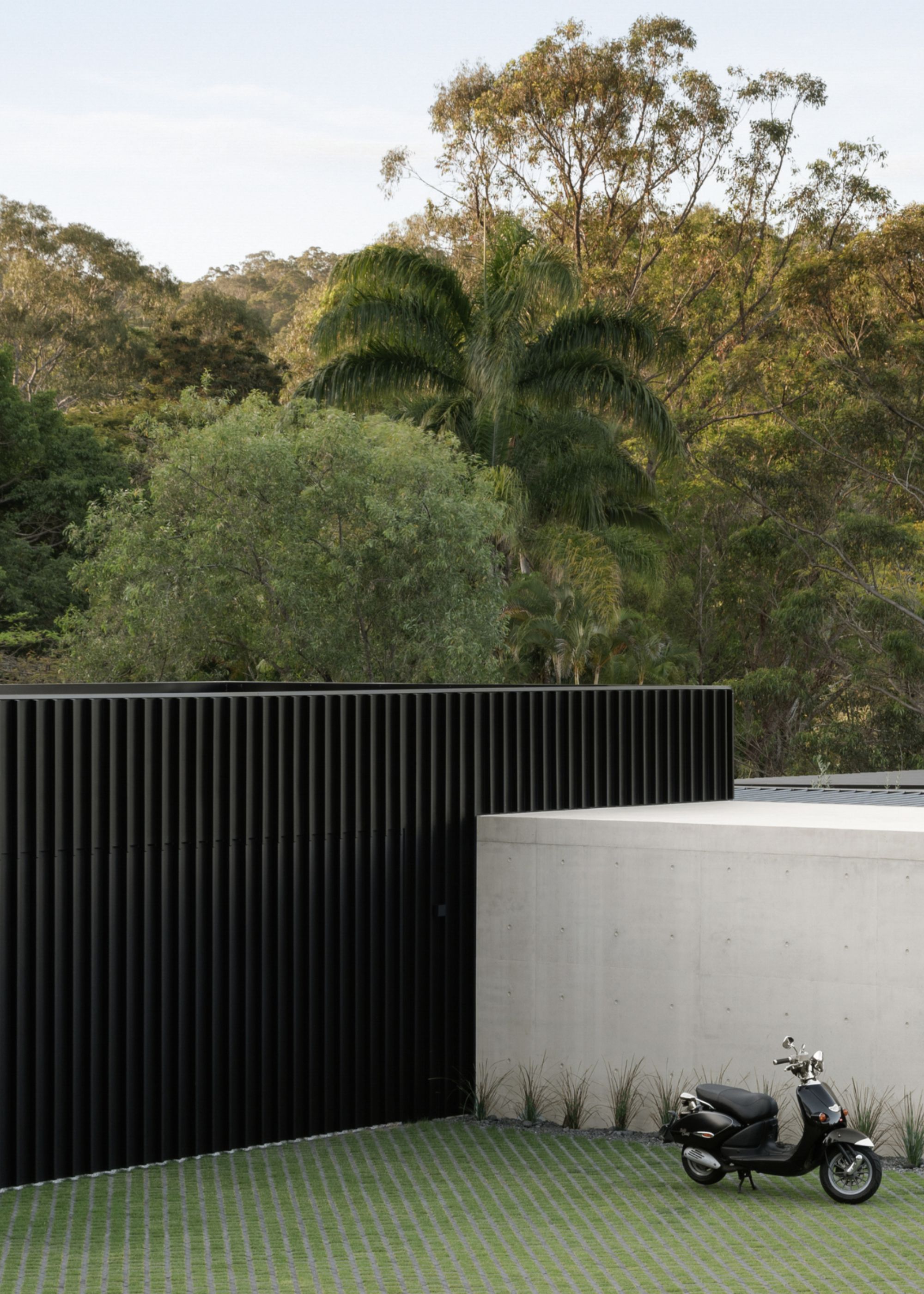
Black seems to have quite the impact.
Although a relatively simple switch, painting your wooden fences black can instantly elevate the feel of your outdoor space, creating a more sleek, modern garden design.
There's a tendency to assume that introducing more dark colors will make your space feel smaller and more oppressive, but this can have the opposite effect when used outdoors. Instead of making everything look darker, a black fence will help to emphasize the brightness of your plants, allowing them to look more vibrant and illuminated by contrast to the dark walls.
As a property expert, Wesley Livingstone says, "The dark backdrop makes greenery appear more vibrant, adds depth to small spaces, and can help the boundary visually recede."
So, while a dark living room may make the space feel smaller, when you use these same colors in your garden, it can actually help to open up your outdoor space, creating the illusion of expansiveness.
The Livingetc newsletters are your inside source for what’s shaping interiors now - and what’s next. Discover trend forecasts, smart style ideas, and curated shopping inspiration that brings design to life. Subscribe today and stay ahead of the curve.
How to Style It
Although you may initially feel intimidated by the starkness of this color in your garden, bear in mind that black has been, and always will be, a true neutral color, meaning no matter what you pair it with, it's likely to look pretty good against this backdrop.
"It works just as well with modern outdoor furniture as it does with classic garden elements," explains Keely Smith from JD Elite Interiors.
"Whether you prefer clean lines or a more eclectic style mix of pieces, the fence won’t compete. It ties everything together quietly," she continues.
Black is also a far more forgiving color than others, as Keely mentions, "If the fence has any wear and tear, the black covers it up much better than lighter colors."
Plus, not only does a black fence act as an excellent backdrop for your plants to pop, but this also rings true for the rest of your garden design.
"Another reason I suggest black fences is that they make a perfect stage for outdoor accents. Things like string lights, metal wall art, or colorful hanging planters all look bolder against the dark paint," says Keely.
As she sums up, "It gives you a clean slate to build from and makes it easy to switch things up seasonally without repainting or rethinking the whole area."
1. Make Your Surroundings the Star
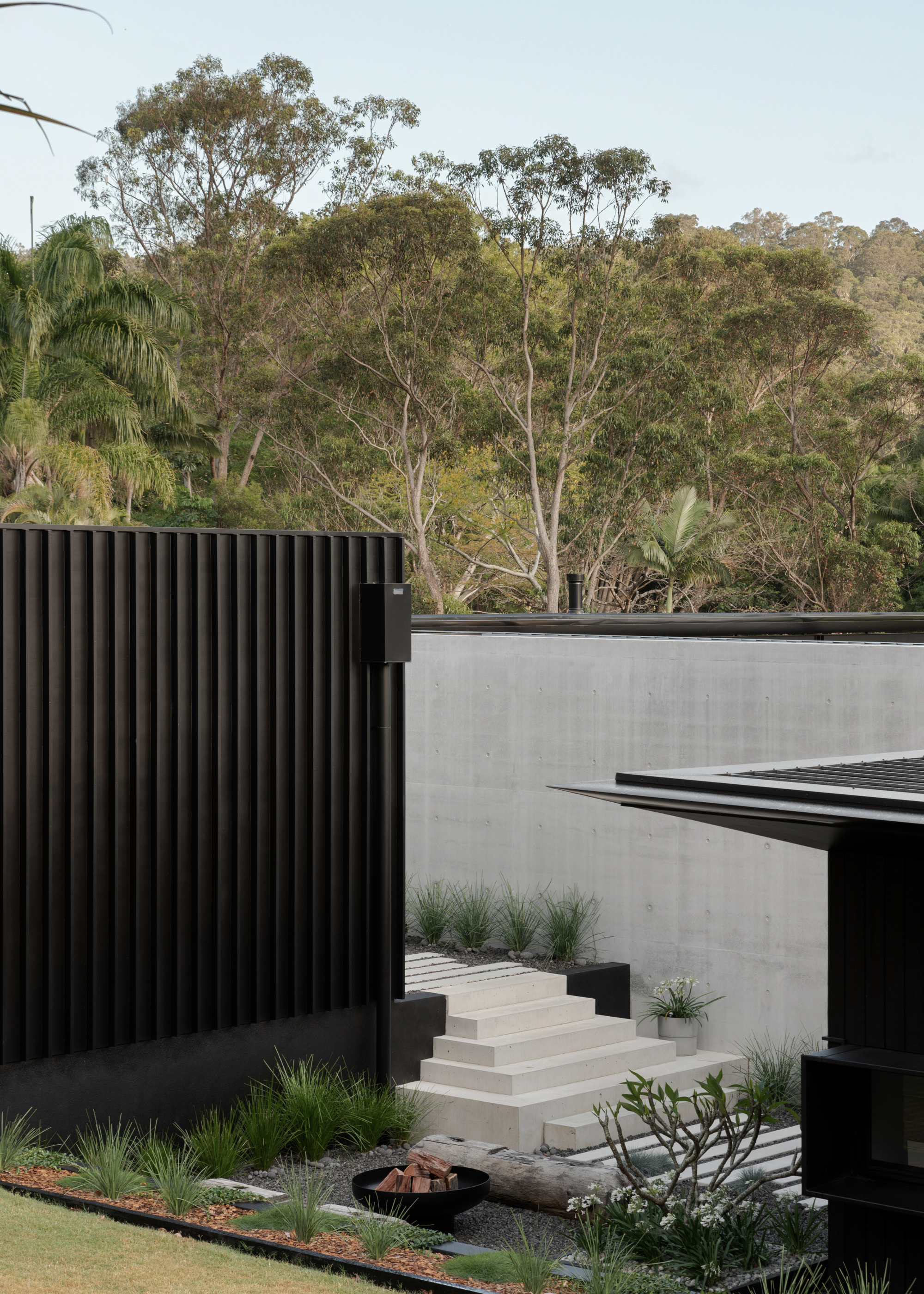
Sarah chose to use timber cladding for its rich textural materiality, adding another level of dimension to the design.
This project, set among the rich, verdant landscape of Noosa, in Queensland, Australia, was designed with its surroundings in mind, carefully constructed to avoid detracting from the beauty of the land, and a dark fence played a key role in achieving this goal.
"Set within the lush hinterland of Noosa, the home was designed to sit gently on the land, not to dominate, but to belong," explains the architect behind the building, Sarah Waller.
Instead of mimicking the colors of the landscape to create this illusion of 'belonging' to the land, Sarah instead opted for starkly contrasting materials.
"The first impression is intentionally bold: an off-form concrete wall paired with black timber cladding creates a sense of privacy and permanence. But behind this solid facade lies a home that’s deeply connected to its landscape, open, light-filled, and sophisticated," Sarah continues.
If your primary goal is garden or deck privacy ideas, then opting for darker-toned fencing is a great way to achieve that, without sacrificing style.
2. Expand Your Small Garden or Patio
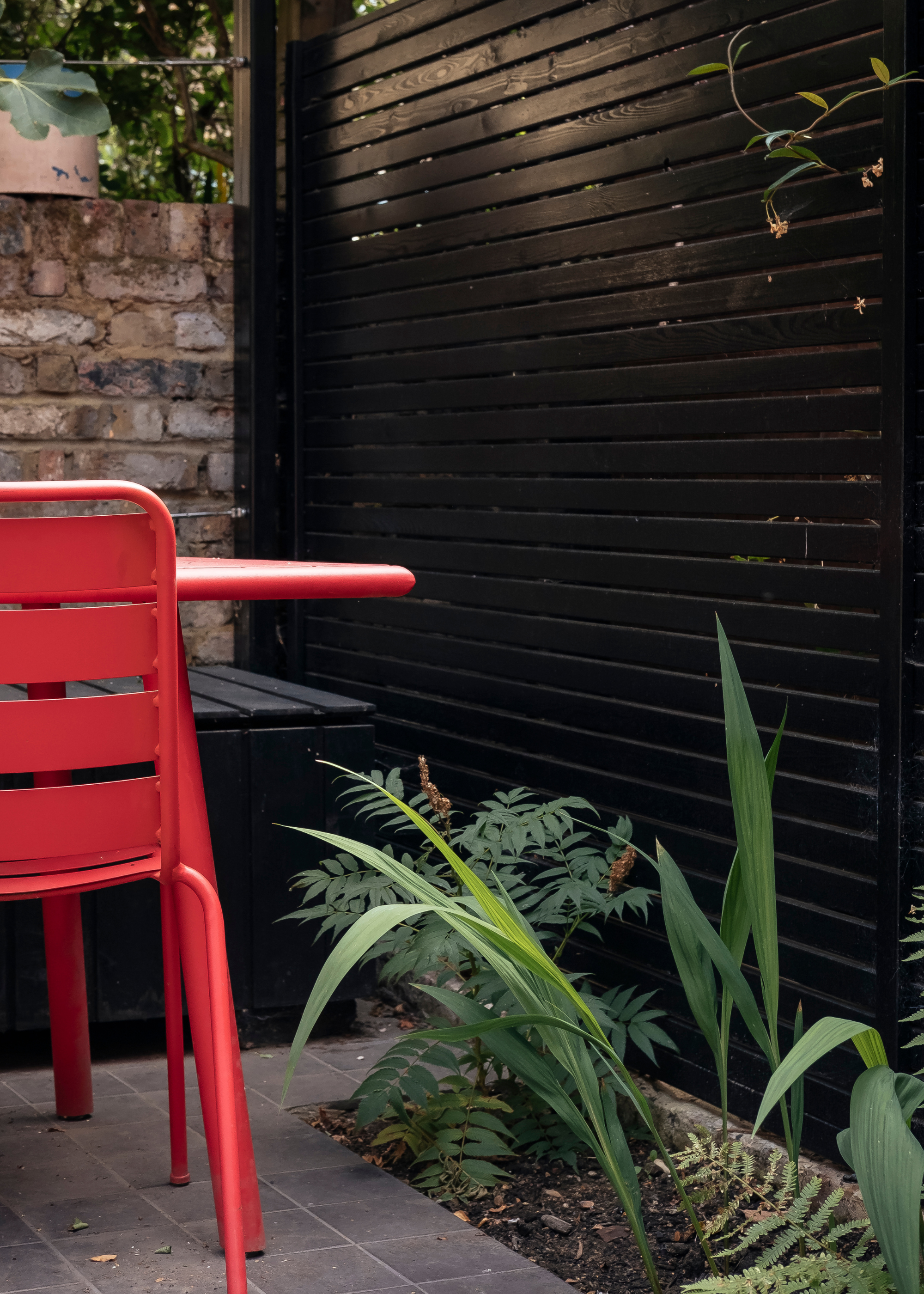
Bright red furniture supplies another level of contrast to this garden design.
Although this North London home now stands as the model for chic, modern design, this was far from the case when the team at Whittaker Parsons first began the project.
Recognising that an urban garden was a highly sought-after feature in this area of London, their goal was to place a stronger emphasis on the outdoor space, updating it to feel more in line with the interior design of the home. Painting the fence black was just one way in which they moved towards this image.
"A black fence creates a strong, eye-catching backdrop that really brings out the colours of your plants," explains Matthew Whittaker.
Not only does the dark color make the plants sing louder, but it is also particularly appropriate for this size of garden. As Matthew explains, "It’s a sleek, contemporary option that works particularly well in smaller gardens, adding depth without overwhelming the space."
3. Let the Plants Do the Talking
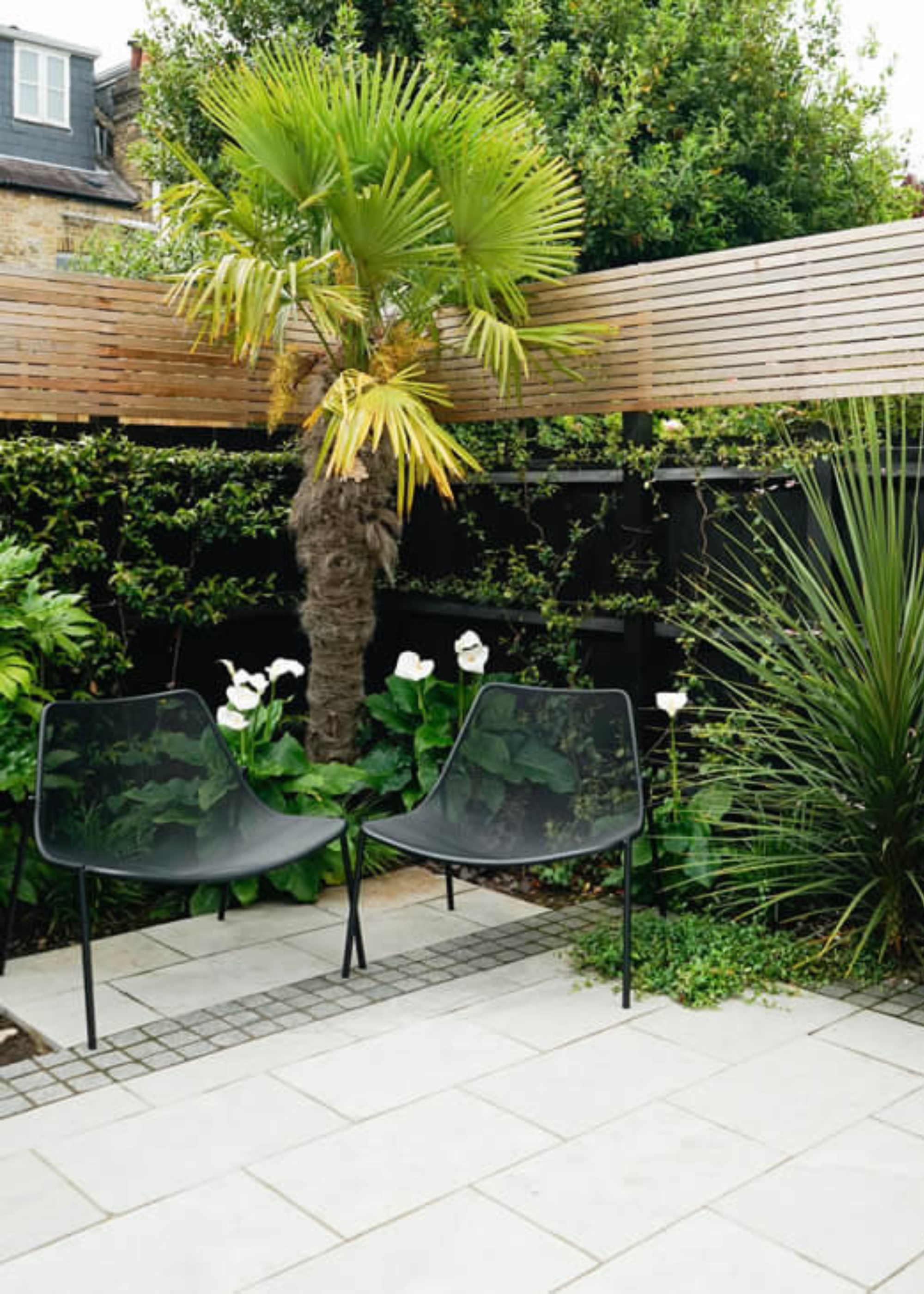
Arrange the right planting scheme against the deep dark backdrop and fence for a pop of color.
"We always encourage clients to paint their fences dark, because it makes them 'disappear' and any greenery against them really pops out," explains Claire Belderbo, from Belderbos Landscapes.
In this small London garden, the team at Belderbos managed to make a striking visual impact, despite the limited space. Instead of attempting to bring in various complicated design features, they opted for a pared-back approach and let the plants take the spotlight.
Although it may seem intimidating at first, painting your fence black can help to alleviate some of the pressures of designing a small garden, as Claire explains, "Black can feel like a bold choice, especially in a small garden, but using it at the boundaries really helps other things in the garden draw focus."
With plenty of vibrant plants, including passion flower and evergreen jasmine, some of the best plants to cover a fence, the black fencing fades to the background.
"I love for the emphasis to be on the plants and landscaping, so we'll often use black garden furniture, too, that disappears with the fences," says Claire.
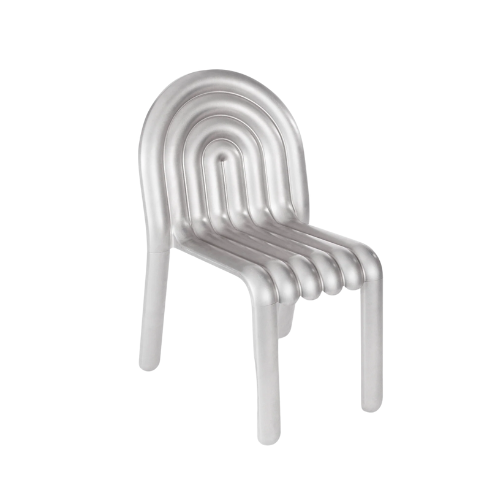
Tom Dixon has long been the go-to source for cool, striking designs, and this lightweight aluminum chair is just another testament to his brilliance. The puffy, bubble-like texture given to the aluminum material imbues it with a surprising softness and makes for a more playful feel to the chair.
While we are thoroughly convinced of this shade, we can also understand that it may not be for everyone. Luckily, there's plenty of other shades to explore, and so long as you know the four colors to avoid when painting your fence, you should be good to go.

Maya Glantz is a Design Writer at Livingetc, covering all things bathrooms and kitchens. Her background in Art History informed her love of the aesthetic world, and she believes in the importance of finding beauty in the everyday. She recently graduated from City University with a Masters Degree in Magazine Journalism, during which she gained experience writing for various publications, including the Evening Standard. A lover of mid-century style, she can be found endlessly adding to her dream home Pinterest board.
